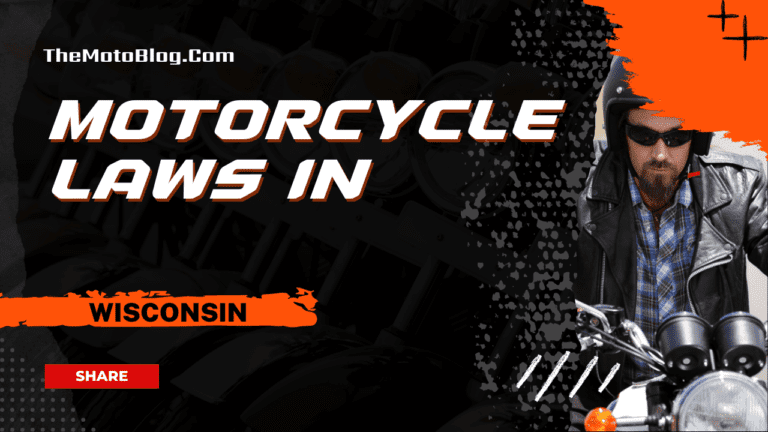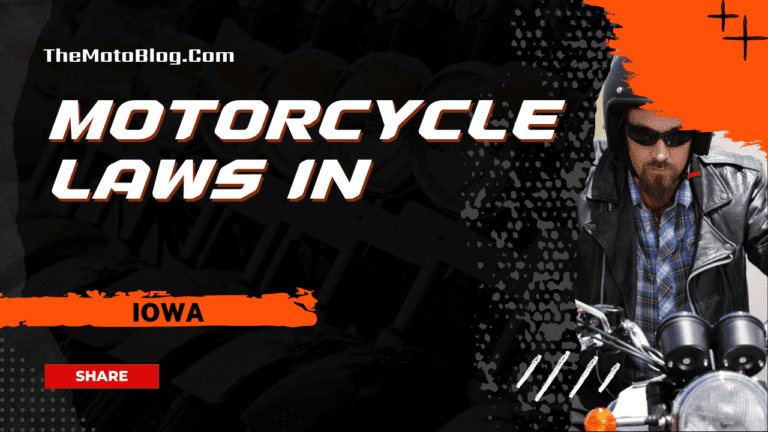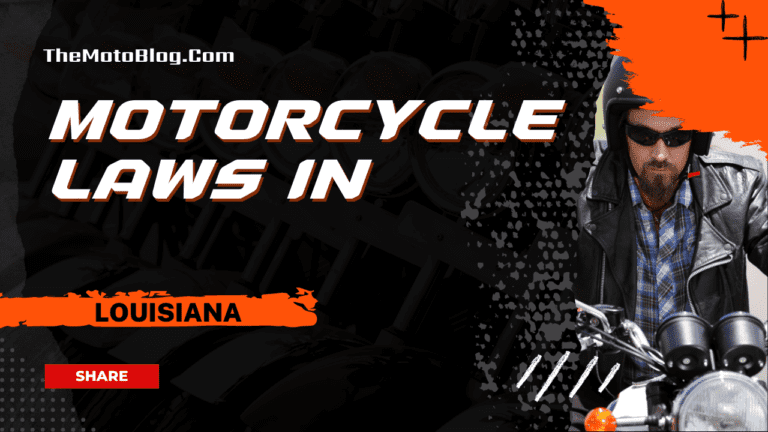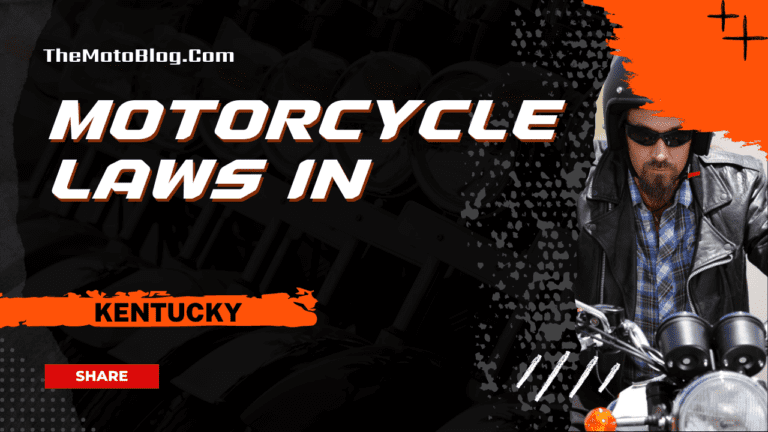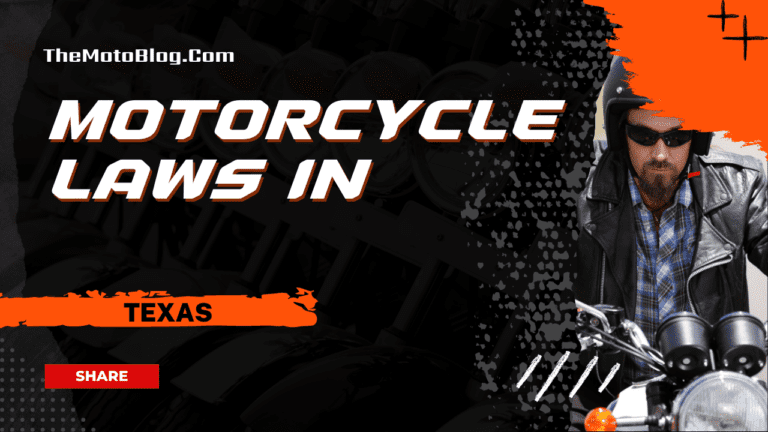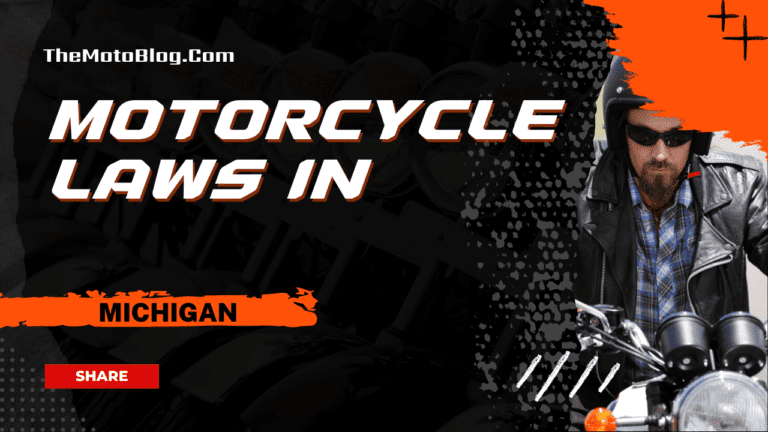Motorcycle Laws in Florida: A Comprehensive Guide for Riders
If you’re considering hitting the open road on two wheels in the Sunshine State, it’s crucial to know what rules and regulations apply. Florida motorcycle laws are unique and not knowing them can land you in hot water. I’ve taken a deep dive into these laws, from helmet requirements to licensing specifics, so you can ride with confidence.
First things first: Helmets. Florida law has some specific stipulations when it comes to protecting your noggin. Riders over 21 who have at least $10,000 in medical insurance coverage for motorcycle-related injuries are allowed to go helmet-free. However, if you’re under 21 or don’t carry enough insurance, a helmet is non-negotiable.
But there’s more than just helmets – the laws also cover aspects like eye protection, passenger regulations and even handlebar heights. It might seem overwhelming but don’t worry! My job here is to simplify these rules for you so you can focus on enjoying your ride. So let’s gear up and get started with understanding motorcycle laws in Florida!
Key Takeaways
- In Florida, riders over 21 who have at least $10,000 in medical insurance coverage for motorcycle-related injuries are allowed to go helmet-free.
- All motorcyclists in Florida must use eye-protective devices while on their bikes unless they are riding bikes equipped with windshields.
- To drive a motorcycle in Florida legally, one needs either a ‘Motorcycle Only’ license or a ‘Motorcycle Endorsement’ added to their regular driving license.
- Lane splitting is not legal in Florida.
- Helmets are about 37% effective in preventing fatal injuries to motorcyclists and 41% for motorcycle passengers.
- Under Florida law, motorcycles are not considered motor vehicles and thus aren’t subject to the same mandatory insurance laws that apply to cars.
- If found guilty of causing bodily harm while operating a motorcycle, riders must establish financial responsibility by buying liability coverage with minimums of $10,000 per person per accident and $20,000 per accident total.
- Florida has specific licensing requirements and age restrictions for riders, with different stipulations for those under 16, between 16-18, and above 18.
- In Florida, your motorcycle must have permanent and regular seating for both you and your passenger.
- The violation of motorcycle laws in Florida can result in severe consequences such as fines, points on your driving record, and even jail time.
- Always check the local rules and regulations, as they may change from time to time.
In Florida, motorcycle laws are designed to promote rider safety, with key regulations including helmet requirements for those under 21, mandatory eye protection, and rules for carrying passengers. Neighboring Georgia has its own unique set of motorcycle laws, with mandatory helmet usage for all riders, passenger footrests, and restrictions on handlebar height. Alabama’s motorcycle laws also require helmets for all riders and place regulations on modulating headlights. Traveling west, riders will find Mississippi’s motorcycle laws focusing on helmets, eye protection, and passenger age restrictions. Understanding the specifics of motorcycle laws in Florida and the regulations in neighboring states is vital for riders planning to journey through the southeastern United States. This knowledge ensures compliance with varying local regulations, fostering a culture of safety and legal adherence across state lines.
Understanding Motorcycle Laws in Florida
Driving a motorcycle can be an exhilarating experience, and Florida’s sunny weather makes it an ideal place for this. However, it’s essential to understand the motorcycle laws in this state before hitting the road.
Firstly, let’s discuss helmet laws. Florida law requires riders under 21 to wear helmets at all times while riding a motorcycle. But if you’re over 21, you have the option not to wear one as long as you carry medical insurance coverage of at least $10,000.
Next up is eye protection. Regardless of age or insurance status, Florida mandates that all motorcyclists must use eye-protective devices while on their bikes unless they are riding bikes equipped with windshields.
Another key point revolves around license requirements. To drive a motorcycle in Florida legally, one needs either a ‘Motorcycle Only’ license or a ‘Motorcycle Endorsement’ added to their regular driving license.
Lastly, let me touch upon lane splitting – maneuvering between lanes of slow-moving or stopped traffic. Contrary to popular belief, lane splitting is not legal in Florida, regardless of how many motorcycles are involved.
Understanding these laws can help ensure your safety and prevent any unnecessary legal hassles on your biking journey through The Sunshine State.
The Importance of Helmet Use
Let’s dive into the topic of helmet use. In Florida, there’s a law that allows riders over 21 to hit the roads without a helmet, provided they have at least $10,000 in medical insurance coverage. However, just because it’s legal doesn’t mean it’s wise.
According to data gathered by the National Highway Traffic Safety Administration (NHTSA), helmets are about 37% effective in preventing fatal injuries to motorcyclists and 41% for motorcycle passengers. In other words, for every 100 motorcyclists killed in crashes while not wearing a helmet, 37 could potentially have been saved had they worn helmets.
Here is a concise representation:
| Effectiveness | |
|---|---|
| Motorcycle Riders | 37% |
| Motorcycle Passengers | 41% |
Despite these compelling stats, only around half of all motorcyclists wear helmets. That puts countless lives at unnecessary risk each year.
So even if Florida law gives adults the liberty not to wear one under certain conditions – remember this: A few seconds’ pleasure can lead to lifelong consequences or even premature death when things go wrong on the road.
Florida’s Insurance Requirements for Motorcyclists
First off, let’s dispel a common myth: Florida does not require motorcyclists to carry insurance. Yep, you read that right. It might sound strange, but under Florida law, motorcycles are not considered motor vehicles and thus aren’t subject to the same mandatory insurance laws that apply to cars.
Even though it’s not compulsory in Florida, I strongly recommend getting motorcycle insurance for your own protection. Well consider this: if you’re involved in an accident and found at fault, you could be held personally responsible for injury or property damage costs.
Here’s where things can get a little tricky – the Financial Responsibility Law comes into play if you cause bodily harm while riding your motorcycle in Florida.
| The Financial Responsibility Law |
|---|
| If found guilty of causing bodily harm while operating a motorcycle, riders must establish financial responsibility by buying liability coverage with minimums of $10,000 per person per accident and $20,000 per accident total |
Failure to comply with these requirements can result in severe penalties including:
- License suspension
- Reinstatement fees
- Mandatory SR-22 requirement
Licensing and Age Restrictions for Riders
Navigating through the motorcycle laws in Florida, I discovered that there are specific licensing requirements and age restrictions for riders. To legally operate a motorcycle here, you need either a ‘Motorcycle Only’ license or have the ‘Motorcycle Endorsement’ on your regular driver’s license.
To acquire these licenses, you must be at least 16 years old. That’s right! No matter how proficient you may be, if you’re under 16, it’s a no-go. But simply being 16 isn’t enough. If you’re between the ages of 16 to 18, there are additional hoops to jump through.
Firstly, before hitting the road on two wheels, minors must have had their learner’s permit for at least one year without any traffic convictions. For those under 18 but over 16:
- You’re required to complete the Basic Rider Course (BRC) or Basic Rider Course updated (BRCu) from an authorized Sponsor.
- You’ve got to hold at least a Learner’s License.
Moving onto adults aged 18 and above; although you don’t need a learner’s permit anymore, Florida law still mandates that all new applicants complete either the BRC or BRCu regardless of age.
| Age Group | License Requirement | Additional Rules |
|---|---|---|
| Under 16 | Not Allowed | N/A |
| 16 –17 | Motorcycle Only/Motorcycle Endorsement | Must hold Learner’s License for one year with no traffic convictions |
| Above 18 | Motorcycle Only/Motorcycle Endorsement | Must complete BRC/BRCu |
Laws Pertaining to Lane Splitting in Florida
Now, why is lane splitting a big no in Florida? Simply put, it’s considered too dangerous. While proponents argue it reduces traffic congestion and can even be safer for motorcyclists under certain conditions, opponents point out that it can surprise other drivers and lead to accidents.
It might surprise you but there are only a few states where lane splitting is explicitly allowed. As of now, California is the only state that fully legalized this practice back in 2016. Other states have various restrictions on when and how lane splitting can occur.
Here’s an interesting fact: studies show many drivers are unaware of their state’s laws about lane splitting. A survey conducted, found:
| Percentage | |
|---|---|
| Drivers who think motorcycle lane-splitting is legal | 14% |
| Drivers who aren’t sure whether it’s legal or not | 25% |
In my opinion, regardless of your stance on this issue, every rider should know their rights and responsibilities when they mount up – ignorance isn’t bliss when it comes to road safety!
So if you’re planning on riding your motorcycle in Florida, remember these key points:
- Don’t attempt to squeeze your bike between cars at any speed.
- Always stick within one designated driving lane.
- Stay vigilant for sudden changes from other drivers – you never know when someone might unexpectedly switch lanes or stop short.
DUI Penalties for Motorcyclists in the Sunshine State
The state’s laws are stringent and designed to discourage driving under the influence. If you’re caught riding your motorcycle after a few drinks, be prepared for hefty penalties.
Florida employs a tiered system of penalties depending on the offender’s blood alcohol content (BAC) and previous convictions. Even first-time offenders aren’t let off lightly – a BAC of .08% or above will land you with fines and potential jail time.
Here’s how Florida lays out its DUI penalties:
| BAC Level | First Offense | Second Offense |
|---|---|---|
| .08% – .14% | $500 – $1,000 fine, up to 6 months jail | $1,000-$2,000 fine, Up to 9 months jail |
| .15% or higher | $1,000-$2,000 fine plus mandatory ignition interlock device installation. | $2,000-$4,000 fine plus mandatory ignition interlock device installation |
Let me tell you about the implications of these penalties. Hefty fines can take a significant toll on your finances while jail time disrupts your personal life and work commitments. It doesn’t stop there though; those convicted also face probation periods and mandatory community service hours.
- Probation: Up to one year for each offense
- Community Service: Mandatory 50 hours
Moreover, repeat offenders face even harsher punishments including license suspension or revocation which could last from 180 days up to permanent revocation.
Motorcycle Equipment Standards and Regulations
Riding a motorcycle needs specific equipment, all aimed at increasing your safety on the road. In Florida, every motorcycle must be equipped with:
- At least one headlamp (but not more than two)
- At least one tail lamp
- Brake light(s)
- Stop lamp
- License plate light
- Multiple beam road lighting equipment
And let’s not forget about mirrors! In Florida, you need at least one mirror located so as to give the driver a clear view of the highway behind him.
Here’s a quick glance at those requirements:
| Equipment | Requirement |
|---|---|
| Headlamps | 1 – 2 |
| Tail Lamp | At Least 1 |
| Brake Lights | Required |
| Stop Lamp | Required |
| License Plate Light | Required |
| Road Lighting Equipment | Multiple Beam |
There’s also something called “eye protection” under Florida law. Essentially, if you’re riding without a windshield that meets state standards (Florida Statute Section 316.211), then you’d better have some form of eye protection on – goggles or glasses made of safety glass or plastic.
However, there are exceptions! If your ride is over 50 years old and registered as an antique vehicle, some of these regulations may not apply. It’s always best to check with local authorities if you’re unsure about any equipment guidelines.
Rules for Carrying Passengers on Motorcycles
According to Florida law, your motorcycle must have permanent and regular seating for both you and your passenger. Additionally, if your passenger is under 18 years old, they’re required by law to wear a Department of Transportation (DOT) approved helmet, regardless of the operator’s age or insurance coverage.
The state also mandates specific footrests for passengers. That means if you plan on having someone ride pillion frequently, you’ll need a bike designed with appropriate passenger footrests.
Let’s look at some essential facts:
| Fact | Requirement |
|---|---|
| Seating | Permanent and regular seating for both rider and passenger |
| Helmet | DOT approved helmet mandatory for passengers under 18 |
| Footrests | Specific footrests necessary for passengers |
Moving onto positioning rules: Your passenger has to sit behind you or in a sidecar. It’s illegal in Florida to carry a passenger in front of you on the motorcycle.
So remember:
- Ensure your bike has proper seating arrangements.
- Helmets are non-negotiable for underage passengers.
- Get those necessary footrests installed.
- Keep your passengers seated correctly!
As an aside from the legalities – ensuring comfort during rides can make all the difference between an enjoyable journey or otherwise. Try padded seats or back rests; after all, happy travelers make better companions!
Consequences of Violating Motorcycle Laws
Skirting around Florida’s motorcycle laws isn’t a wise choice. Neglecting the rules can lead to severe repercussions, both legally and personally. The consequences vary, depending on the nature of the violation.
For starters, riding without a helmet can attract an initial fine of up to $1000. In addition, you’ll score points on your driving record that could escalate your insurance premiums significantly. Here’s a quick look at Florida’s penalty structure for motorcyclists:
| Violation | Fine | Points |
|---|---|---|
| No Helmet (if required) | Up to $1,000 | 3 |
| Speeding (10-14 mph over limit) | $200-$250 | 3 |
| Reckless Driving | Up to $500 | 4 |
Failure to carry adequate insurance is another common violation with hefty penalties in Florida. If you’re caught riding without proof of insurance – especially after an accident – you could be hit with fines ranging from $150 for first offenses up to $500 for subsequent violations.
But it doesn’t stop there; license suspensions are also part of the mix. You might lose your driving privileges for up to three years if you accumulate too many points on your record within a specific timeframe:
- 12 points within a year: 30-day suspension
- 18 points within 18 months: Three-month suspension
- 24 points within three years: One-year suspension
In some cases, violations may even result in jail time, particularly when reckless driving leads to injury or death.
Conclusion: Staying Legal on Two Wheels
I’ve spent the last few sections diving deep into the intricate world of motorcycle laws in Florida. Now, it’s time to wrap things up and make sure you’re fully equipped with the knowledge you need to stay legal on two wheels.
Firstly, remember that helmet laws are key in Florida. If you’re under 21, wearing a helmet isn’t just safe – it’s law. And for those over 21 carrying less than $10,000 medical insurance coverage, helmets remain mandatory.
Secondly, eye protection is non-negotiable when riding a motorcycle in Florida unless your bike has an approved windshield. You might think sunglasses will cut it but they won’t – get yourself some approved gear.
Let me also remind you about lane splitting – it’s not allowed in Florida. Yes, traffic can be frustrating at times but patience is key here.
Abiding by these laws not only keeps you on the right side of law enforcement; it could save your life too. Finally yet importantly, always keep abreast with updates regarding these regulations as changes do occur from time to time.
Remember – staying legal on two wheels isn’t complicated once you know what’s expected of you. Ride safe and enjoy every mile!
Motorcycle Laws in the US By States
If you liked this article, then please subscribe to our YouTube Channel for more Bike Videos. You can also find us on Instagram, Twitter and Facebook.
Disclosure: As an Amazon Associate, I earn from qualifying purchases. Read more about Amazon Affiliate Disclaimer.

Vishwanath Mathpati
I am Vishwanath Mathpati, a full-time Blogger and Motorcyclist from Bidar, Karnataka. I love writing about my Motorcycles Stories and Riding Gears on this blog.
Know More About Me.


